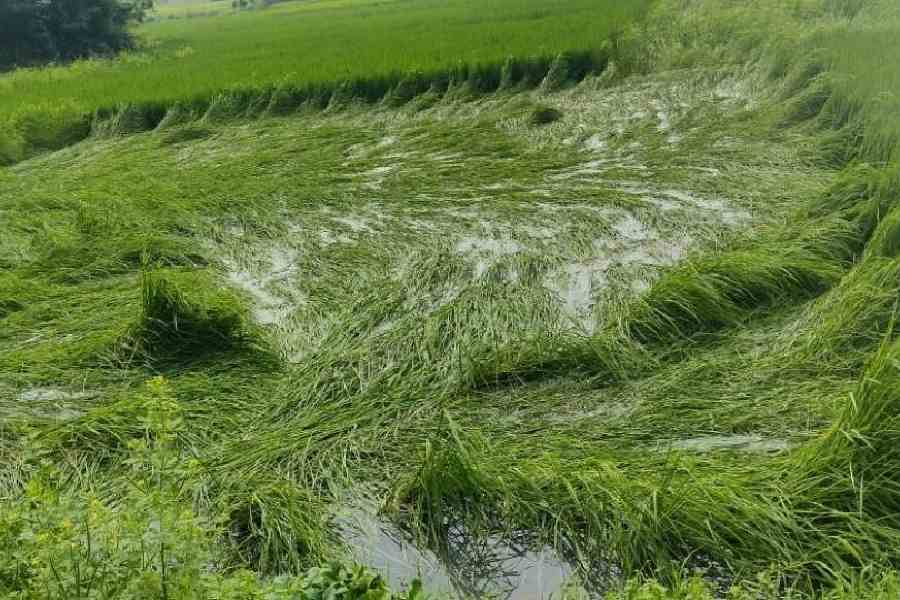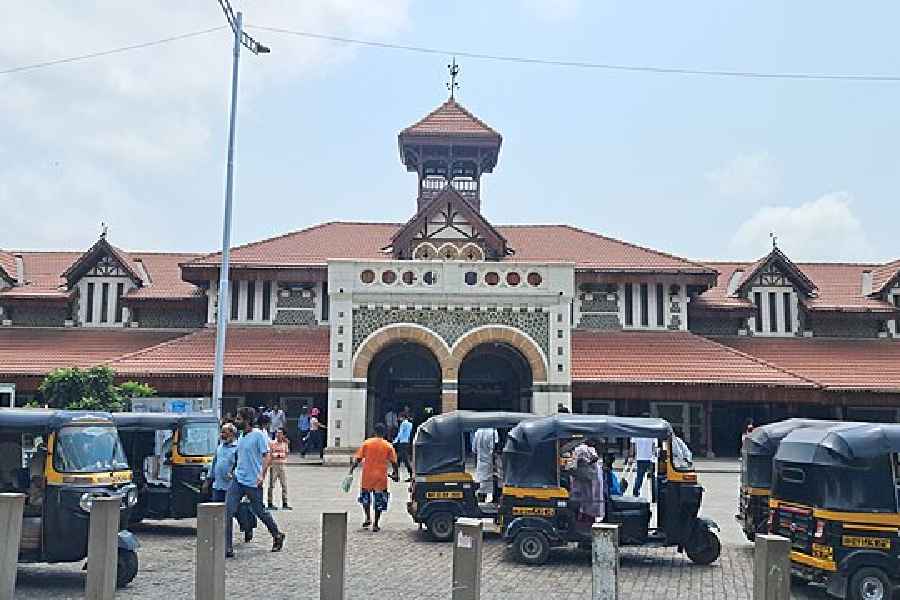Cyclone Dana has brought in its wake bad news on Gobindabhog, the widely exported and GI-tagged aromatic rice that goes into delicacies like the pulao or payesh.
The rain unleashed by Dana has damaged swathes of paddy fields across East Burdwan, which produces more than half of Bengal’s yearly Gobindabhog yield of about 3 lakh tonnes, initial reports received by the agriculture department suggest.
“On average, Gobindabhog is grown on 40,000 hectares in Bengal, of which more than 22,000 hectares fall in East Burdwan. Gobindabhog is also cultivated in Hooghly, Nadia and North 24-Parganas,” a senior agriculture department official said.
Hooghly too has faced heavy rainfall, he added.
With the department still assessing the crop damage from the heavy rainfall received on Thursday night and Friday, it so far appears that among the worst-hit tracts of farmland are those growing the short-grain, aromatic and sticky rice variety.
“Preliminary reports suggest that the production of Gobindabhog will definitely fall this year,” a second official confirmed.
Bijoy Ghosh, a farmer from Oari village in Khandaghosh, East Burdwan, said: “I cultivated Gobindabhog on 17 bighas (around 2.2 hectares), and the crop on at least five bighas has been damaged completely because of heavy rain.”
He said the paddy crop on most of his land was “flattened and submerged” and that he didn’t know how much of it could be salvaged. “I fear the total production this year will be half the usual yield,” Ghosh said.
East Burdwan recorded 104mm rain between 8am on Friday and 8am on Saturday, with severe crop damage reported from areas such as Khandaghosh, Raina I and II, and Jamalpur where most of the Gobindabhog is grown.
This rice variety is in high demand in the Gulf countries, particularly Saudi Arabia, the UAE, Oman, Qatar, Bahrain and Kuwait. An exporter in Calcutta said the global demand was rising continually.
Jiyaul Haque Midya, an East Burdwan farmer who cultivates only Gobindabhog, claimed the rain had flattened much of the crop on his 14 bighas.
“The crop was almost fully grown – it will lead to huge losses for me. I can estimate the damage only after the field dries out,” Midya said.
Another farmer said local growers cultivate Gobindabhog instead of the regular paddy varieties because of its profitability.
One bigha of land can yield a little over five quintals of paddy. A quintal of Gobindabhog earns a farmer ₹5,000 against a production cost of about ₹3,000.
“Gobindabhog rice brings a profit of ₹2,000 a bigha while the regular varieties bring in only about ₹500 to ₹600 per bigha,” a farmer said.
Nakul Maity, deputy director of agriculture for East Burdwan, could not put a figure on the total losses, saying the department was still estimating the damage.
Leaders of the CPM-backed All India Kisan Sabha have decided to submit a memorandum to the block development officers and agriculture department officials on Monday, demanding compensation for the farmers, especially the growers of Gobindabhog.
“We will demand a proper assessment, as the damage to Gobindabhog is extensive in the area,” said Binod Ghosh, a state committee member of the Sabha.










